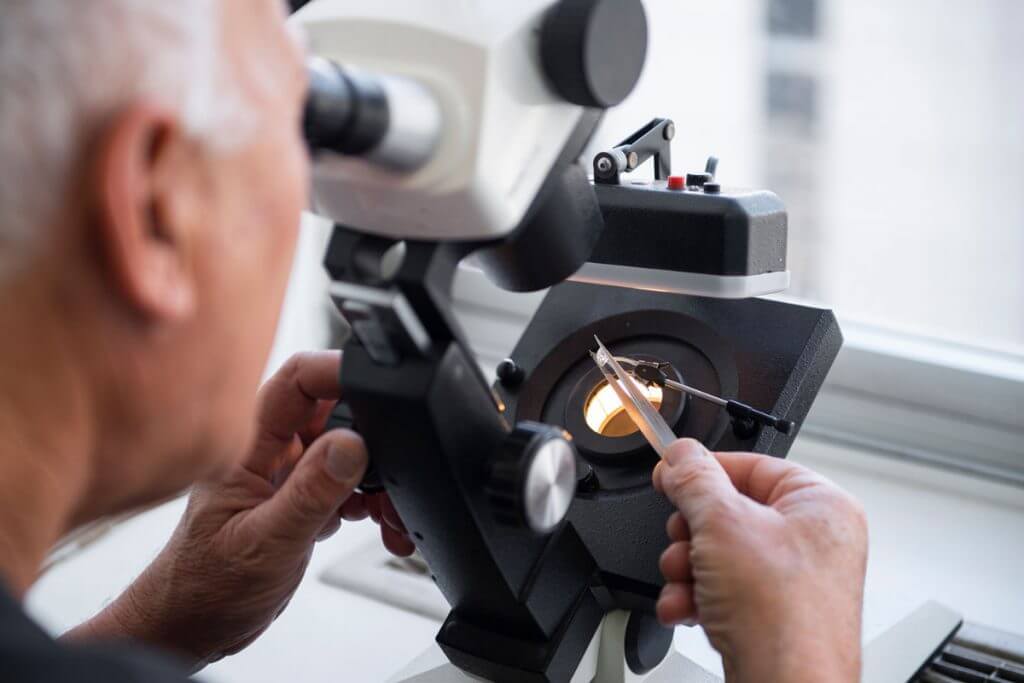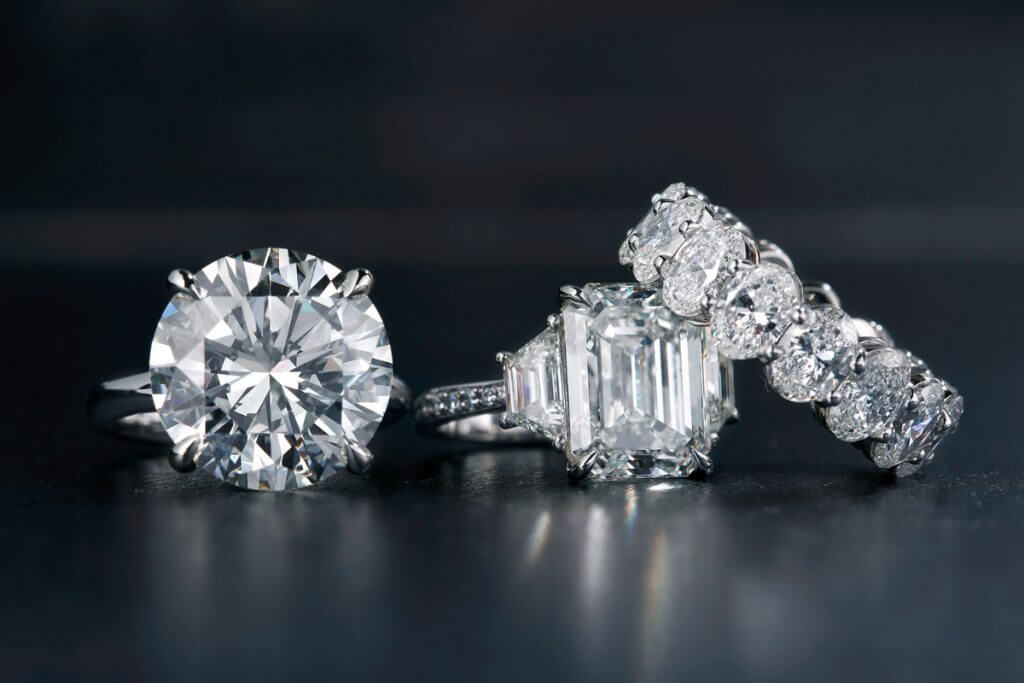
Lab-grown diamonds are absolutely soaring in popularity as people are starting to realize how incredible these diamonds really are in terms of both quality and value. But what’s the difference between these diamonds, and how do lab diamond companies differ from the mined diamond industry?
The diamond industry has long been lambasted for the ravages it has caused worldwide, specifically on the African continent, earning their mined gems the name of blood diamonds. In this article we explain why laboratory-grown diamonds are an entirely more ethical option for engagement rings and other pieces of jewelry – and how they can actually surpass natural diamonds in quality.
What is a lab-grown diamond?
Lab-grown diamonds are actually real diamonds. Their physical, chemical and optical properties are the same as mined diamonds, but they are grown from a diamond seed instead of being harvested from the earth.
While natural diamonds are created when carbon is subjected to high pressure and heat, between 145 and 200 kilometers below the earth’s surface, laboratory-grown diamonds are made when carbon is subjected to the same conditions but in a lab. Making a diamond in a lab requires replicating the conditions deep within the Earth – temperatures of at least 1,400 degrees Celsius and extreme atmospheric pressure (60,000 ATM).
A diamond seed is placed in a growth chamber and heated to the appropriate temperature; a small amount of carbon is then introduced into the room and bonds with the seed crystal. This process can take between five days and two months. The result is a rough diamond that can be cut and polished into any shape or size.
Why do people get lab-made diamonds? Here are some key benefits:
- They’re more affordable: Man-made diamonds demand fewer resources to extract so they are more cost-effective.
- They’re eco-friendly: Lab-grown diamonds have less of an environmental impact than mined diamonds. It takes tremendous amounts of energy and resources to mine diamonds. Lab-grown diamonds are an eco-friendly and socially conscious choice!
- There are no apparent differences: Lab-grown diamonds look exactly like mined ones!
The difference between a karat and a carat
Is a lab-created diamond a real diamond?

A lab-created diamond is a real diamond. Lab-created diamonds are made in a lab by scientists who replicate the high-pressure, high-temperature
conditions that cause carbon atoms to crystallize and form diamond crystals.
The process starts with one of two things: either a tiny sliver of a mined diamond or pure carbon graphite, these serve as the diamond seed in the laboratory process. These seeds are placed in a vacuum chamber with carbon-rich gasses like methane or acetylene. Then, the diamond seed is transformed into a rough diamond using heat and pressure. This rough diamond can then be cut, polished, and finished into a beautiful jewelry-grade diamond.
Lab-created diamonds are not fake diamonds; they have the same chemical structure as natural diamonds. Rather than being naturally made, these are man-made diamonds. While natural diamonds are made in the Earth’s mantle under extreme heat and pressure over billions of years, lab-created diamonds grow in about two weeks in a scientific facility.
Platinum vs White Gold: Which one is better for engagement rings?
Are lab-created diamonds worth anything?
Lab-created diamonds are definitely worth something and you will be able to resell them. The only difference between synthetic diamonds and natural diamonds is that the latter may retain or appreciate in value over time, but in the majority of cases, both types of diamonds will depreciate since they are luxury goods.
How natural diamonds form
Certain natural diamonds are dated to about 3.2 billion years ago. The process begins with the presence of carbon atoms within sections of the earth’s mantle (kilometers and kilometers beneath the earth’s surface).
Due to the immense pressure and extreme temperatures found there, diamonds gradually begin to form. The entire process can take up to 1 billion and 3.3 billion years, which is approximately 25% to 75% of our earth’s age.

How lab-grown diamonds are manufactured
Making lab-grown diamonds starts by placing a small piece of diamond seed into a growth chamber. Then methane and hydrogen are heated to extreme temperatures and subjected to enormous pressure, replicating the conditions of the earth’s mantle. As the gasses cool and settle, they crystallize on the seed to form a diamond.
The resulting diamonds are visually identical to mined diamonds. They have the same physical properties and optical characteristics as their naturally occurring counterparts. Even their chemical composition is the same, with no difference in terms of their atomic structure.
Should you buy a lab diamond or a natural diamond?
Unfortunately, the natural diamond industry is one of the most violent and corrupt industries. Buying a natural diamond implicitly involves violence, human rights abuses, and environmental destruction. In contrast, lab diamonds are called ethical diamonds since they are not associated with social or environmental concerns.
Laboratory diamonds are cheaper than natural diamonds, so you can get a bigger diamond for your money. They are just as hard as natural diamonds (10 on the Moh’s hardness scale), so they are great for jewelry and aren’t brittle. They can be made in resplendent colors such as blue or red (natural diamonds only come in yellow or brown).
Engagement ring vs. Wedding ring
How can you tell the difference between a lab diamond and a natural diamond?
The differences between a natural diamond and a lab diamond cannot be seen with the naked eye. Natural diamonds have tiny amounts of nitrogen, while laboratory diamonds have no nitrogen. This is how gemologists determine if a diamond is lab-grown or natural.
Browser our collection of jewelry




 My Account
My Account  My Bag
My Bag  My Wishlist
My Wishlist 

